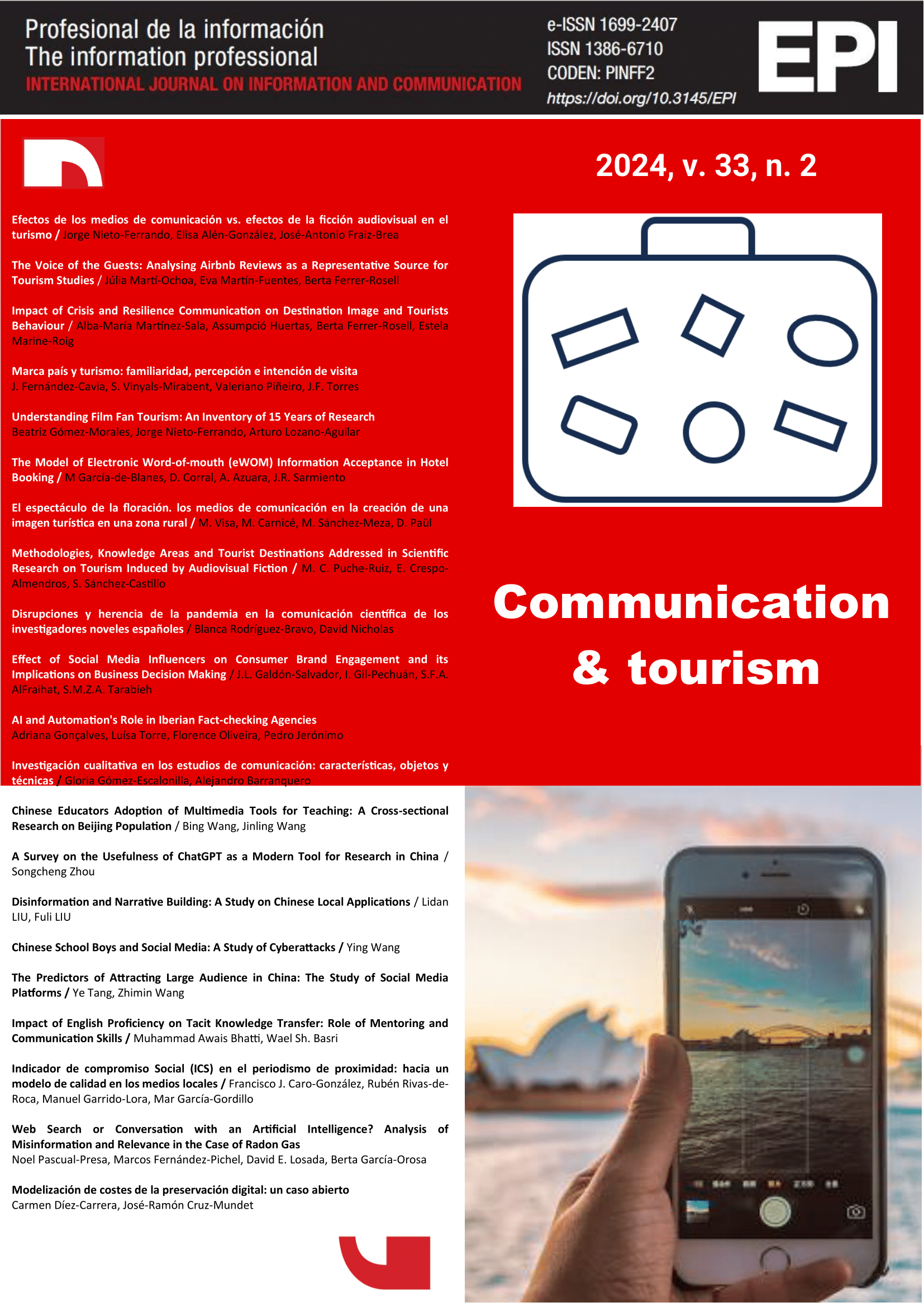Qualitative Research in Communication Studies: Characteristics, Objects and Techniques
DOI:
https://doi.org/10.3145/epi.2024.0211Keywords:
Investigación Cualitativa, Comunicación, Meta-investigación, Técnicas Cualitativas, Género; Métodos, Análisis del Discurso, Entrevistas en ProfundidadAbstract
A snapshot of communication research in Spain that uses qualitative methods as the dominant methodological
perspective is presented. We conduct a content analysis to study the characteristics, objects and techniques that
predominate in a census of 1,025 scientific productions from 2007 to 2018, which includes doctoral theses, projects
and articles published in scientific journals. In the indexed publications, there is a certain lack of qualitative articles,
despite the importance they have in doctoral theses and research projects. These researches use or triangulate
qualitative methods, but not all techniques are used equally. Communication studies frequently resort to discourse
analysis and in-depth interviews, but the presence of observations and discussion groups is minimal. The objects of
study are also varied, although audiovisual formats prevail over journalistic formats and there is a growing interest in
digital media and formats. Finally, at the author level, the results reveal parity, although the gender gap in the highest
level studies is worrying.
Downloads
Downloads
Published
How to Cite
Issue
Section
License
Copyright (c) 2024 Profesional de la información

This work is licensed under a Creative Commons Attribution 4.0 International License.
Dissemination conditions of the articles once they are published
Authors can freely disseminate their articles on websites, social networks and repositories
However, the following conditions must be respected:
- Only the editorial version should be made public. Please do not publish preprints, postprints or proofs.
- Along with this copy, a specific mention of the publication in which the text has appeared must be included, also adding a clickable link to the URL: http://www.profesionaldelainformacion.com
- Only the final editorial version should be made public. Please do not publish preprints, postprints or proofs.
- Along with that copy, a specific mention of the publication in which the text has appeared must be included, also adding a clickable link to the URL: http://revista.profesionaldelainformacion.com
Profesional de la información journal offers the articles in open access with a Creative Commons BY license.




